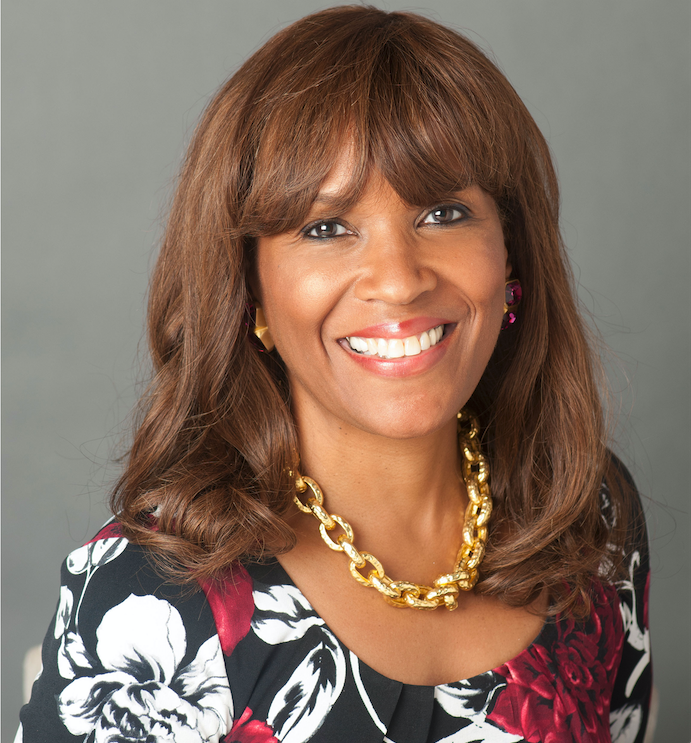Behind every brand delivering simpler experiences for customers is a leader who recognizes the inherent value in keeping things simple. In Simplifiers, I interview business leaders who put simplicity to work.
Here, I speak with Kimberly Davis, Executive Vice President- Social Impact, Growth & Legislative Affairs, National Hockey League.
MM: What is the National Hockey League?
KD: The National Hockey League (NHL) is a professional ice hockey league in North America, currently comprising 31 teams: 24 in the United States and 7 in Canada. The NHL is considered to be the premier professional ice hockey league in the world, and one of the major professional sports leagues in the United States and Canada.
MM: And what does the NHL stand for?
KD: A couple of years ago, the NHL produced the Declaration of Principles. These “values-based” beliefs spell out what the sport of Hockey stands for inclusivity, teamwork, partnership, character-building, perseverance—attributes that will make the sport stronger as it enters its’ next centennial.
MM: How do you think the NHL delivers on your promise every day?
KD: The primary delivery of that promise is through the efforts of using the sport of hockey to teach life lessons and to build vibrant communities. There are many efforts underway within the sport of hockey to ensure that we not only developing the next generation of hockey players but that we shape the next generation of good citizens and prepare them as future knowledge workers in our society. We see hockey as an important avenue to build the essential skills necessary to be successful in life, and our programs reinforce these ideals.
One particular program is Future Goals, a STEM education program introduced four years ago into school systems across the United States and Canada. The web-based curriculum leverages hockey as a way of teaching foundational math and science concepts, with a focus on schools in both urban and rural areas, where in many cases without the fully subsidized support of the NHL and NHLPA these children would not have access to STEM programming. For example, students learn the fundamentals of how the puck operates scientifically, the angles of the stick relating to the puck, how the ice is developed and how ice levels are measured by using physics and other STEM concepts. The program engages NHL players to visit schools and bring to life the concepts they are learning in the classroom. Ultimately, we are helping kids understand that hockey is about building the next generation of knowledge workers.
MM: As a leader, how do you keep things “simple” for your team?
KD: I think part of simplicity is setting context and vision. What I’ve observed coming to the NHL is that the league was excellent with events and activities, but many, particularly those not from the Hockey community didn’t have a real context for what we were doing, and importantly why it is important to building our future. So, the first thing that we did was convene a group of leaders from across the league and clubs for three days to help us craft what our vision was for our business. We created the vision statement that by the year 2025, we want to be seen as the most inclusive, family-friendly sport that contributes to the vitality of communities. Part of how we will achieve this will be by understanding new audiences, demographic shifts and how we may have to shift some of our thinking. From that simple vision statement, we were able to craft a well-articulated strategy. Every time we do something, we ask the question, “Does this work align and get us to where we want to be relative to our vision?” That keeps the team on track and keeps us intentional about the work that we’re doing.
MM: Personally speaking, what’s the most recent simple customer experience that inspired or impressed you?
KD: My experience with MatchesFashion.com. With many fashion brands, returning an item can be a frustrating process: you have to go online, print out and complete various forms, pack the garment, and travel to the post office to ship your return. MatchesFashion has a simple customer service ethos: regardless of what you order, if for any reason you are unsatisfied, they make it easy to return the item—no questions asked. That kind of simplicity inspires brand loyalty because I know that if I am not completely satisfied, it’s easy to adjust. This has created an impressive experience, and the ability to take risks in ordering items because I’m assured of the ease and simplicity in the return process.
MM: What are some of the biggest mistakes that brands make with regards to simplifying?
KD: Even when brands say they want to be simple; when they start operationalizing simplicity, it often becomes incredibly process-heavy. When brands don’t regularly and rigorously maintain that line of sight between the simple vision of what they’re trying to accomplish and all the things they do daily to achieve that vision, a disconnect occurs. My advice is every time you engage in work, ask yourself, “How does this align with the vision of what we’re trying to achieve?” If you cannot see the connection—stop, adjust and make a change.
MM: Any recent examples of a difficult decision that you made at the NHL, that you had to make for the sake of simplicity?
KD: I’ve taken a team that has been very event and activity-driven sport and pushed us to be much more rigorous—contemplating long-term strategy and outcomes, as opposed to activities. Often, I say, “Let’s start from the place that everything we could possibly do is a good thing, but it may not be the thing that we need to be doing.” So, this requires tradeoffs. I’ve found that using data is a powerful way to demonstrate our effectiveness and make decisions about resource allocations.
For example, based on a futurist, outcome and data-driven approach, we’re now in conversations to have our NHL website and associated content in the Spanish language. We have compiled data around demographics, particularly in the US, and understand that of the thirty-one markets that we’re in, over thirty percent of those markets have majority-minority Spanish-speaking demographics.
Our question is; as we build future fandom in the LatinX market – is this a “chicken or the egg” problem— in other words, do you put your content in Spanish, so that you can engage the community, or do you wait until the community is engaged, which maybe they will never be engaged because it’s not in Spanish? These are the types of strategic decisions that will we continue to be faced with that will again require us to use simplicity as an important tool for analysis and action.
MM: What does “simplicity” mean to you?
KD: Simplicity means having a clear vision, supported by data and facts, that is ultimately connected to your long-term growth and brand affinity.
MM: What advice would you give other brands trying to simplify?
KD: Make sure you understand that while data is essential, as essential is the vision of what you stand for (purpose), and who you want to be in the future. Brands have to be very bespoke in how they think about the various audiences that they engage today, and how those audiences will shift and change in the years to come.
MM: Thank you, Kim.
Know a Simplifier or would like to be included in the series? Please recommend an executive for my next interview: [email protected]
Margaret Molloy is global CMO and head of business development at Siegel+Gale. Follow her on Twitter: @MargaretMolloy


